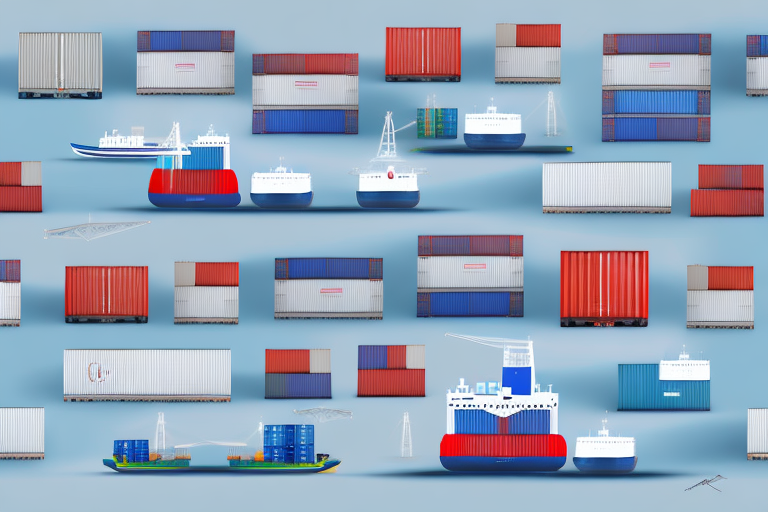How C-TPAT Can Enhance Your Supply Chain Security
Ensuring the safety and security of your supply chain is paramount in today's globalized economy. The Customs-Trade Partnership Against Terrorism (C-TPAT) program offers a suite of benefits designed to mitigate risks associated with international commerce and maintain compliance with industry standards. By participating in C-TPAT, businesses can significantly bolster their supply chain security, enhance operational efficiency, and gain a competitive edge in the marketplace.
Introduction to C-TPAT and Its Benefits for Supply Chain Security
C-TPAT is a voluntary government-business partnership initiated by the U.S. Customs and Border Protection (CBP) in 2001 as a response to the 9/11 terrorist attacks. The program aims to strengthen supply chain security by collaborating with importers, carriers, brokers, manufacturers, and other stakeholders to implement robust security measures. Recognizing the unique challenges of global commerce, C-TPAT fosters cooperation between businesses and government agencies to address and mitigate security risks effectively.
One of the primary advantages of C-TPAT membership is the expedited processing of goods through customs. Members are classified as low-risk, resulting in fewer inspections and reduced delays at border crossings. According to CBP data, C-TPAT members experience up to a 50% reduction in cargo inspection rates, leading to significant cost savings and faster delivery times (ShipScience). Additionally, C-TPAT certification enhances a company's reputation by showcasing a commitment to supply chain security and responsible business practices, thereby providing a competitive advantage.
Understanding the Risks in the Global Supply Chain
Operating within an international supply chain exposes businesses to a myriad of risks, including theft, counterfeiting, smuggling, and terrorism. The complexity of global supply networks makes it challenging to identify and address potential vulnerabilities effectively. According to a 2023 report by the World Bank, supply chain disruptions can lead to significant financial losses, estimated to reach $1.2 trillion globally each year.
Transparency and visibility are critical in mitigating these risks. A lack of clear oversight can hinder the ability to track products accurately, ensuring they are transported and stored securely. Furthermore, language and cultural barriers often complicate communication with international suppliers and partners, exacerbating the risk of misunderstandings and security lapses.
To address these challenges, businesses can implement several strategies: conducting thorough due diligence on suppliers, adopting comprehensive security measures, and investing in advanced technologies that enhance supply chain visibility. These steps not only protect businesses and their customers but also contribute to building a resilient and secure global supply chain.
How C-TPAT Mitigates Security Risks in Your Supply Chain
Participation in C-TPAT grants access to a wealth of resources and best practices designed to minimize supply chain risks. Members receive training on identifying security threats and implementing risk mitigation strategies, leveraging the collective expertise of the C-TPAT community. Collaboration with CBP officials provides businesses with up-to-date information on emerging threats and trends in supply chain security.
Moreover, C-TPAT membership fosters stronger relationships with customers and partners by demonstrating a commitment to supply chain security. This trust can translate into increased business opportunities and more robust partnerships, as stakeholders prioritize working with certified, security-conscious organizations.
C-TPAT also facilitates compliance with other security-related regulations, such as the World Customs Organization's SAFE Framework of Standards. By adhering to C-TPAT requirements, businesses can ensure they meet international security standards, avoiding potential penalties and shipment delays.
The Qualifying Criteria for C-TPAT Membership
Becoming a C-TPAT member requires meeting specific eligibility criteria, which vary based on your role within the supply chain. Generally, applicants must demonstrate a commitment to enhancing security practices and meet established minimum security standards. The application process involves completing a detailed application and undergoing a comprehensive security audit to evaluate existing security measures and identify areas for improvement.
A critical eligibility requirement is the establishment of a documented and verifiable security program. This program should clearly outline your company's security policies, procedures, and employee training initiatives. Additionally, businesses must implement systems for monitoring and reporting security incidents and have contingency plans to address and mitigate breaches effectively.
Compliance with relevant laws and regulations is another essential criterion. This includes adherence to security-related regulations as well as trade and customs laws. Demonstrating a thorough understanding of these regulations and having processes in place to ensure ongoing compliance are pivotal for C-TPAT eligibility.
The Application Process for C-TPAT Certification
Applying for C-TPAT certification involves a multi-step process that, while detailed, is instrumental in achieving enhanced supply chain security. The process begins with gathering essential documentation, including proof of business entity, tax identification, and detailed information about supply chain partners. Following the submission of the application, a security assessment is conducted to review supply chain logistics and security protocols against C-TPAT standards.
Certification is not a one-time achievement; maintaining C-TPAT status requires ongoing compliance with program requirements. Businesses must undergo periodic security assessments to ensure continuous adherence to security standards. This sustained commitment is crucial for retaining the benefits of C-TPAT membership, such as reduced cargo inspections and expedited customs processing.
Preparing for a C-TPAT Audit: What You Need to Know
Thorough preparation is essential for a successful C-TPAT audit. This involves reviewing and updating security policies and procedures to align with C-TPAT standards. Ensuring that all supply chain partners are informed about and adhere to C-TPAT requirements is also critical. Additional training or certifications may be necessary to meet the program's stringent standards.
Conducting a comprehensive risk assessment of the supply chain helps identify potential vulnerabilities. Implementing measures to address these risks is crucial for audit readiness. Maintaining accurate records and documentation of security practices is equally important, as these documents are scrutinized during the audit process.
During the audit, transparency and cooperation with the auditor are paramount. Businesses should provide truthful answers and promptly supply any requested documentation. Addressing any identified issues with a well-developed corrective action plan ensures compliance and facilitates the certification process.
Best Practices for Maintaining Compliance with C-TPAT Standards
Maintaining C-TPAT compliance requires ongoing efforts, including regular security audits, continuous training, and vigilant monitoring of supply chain partners. Staying informed about emerging security threats and trends is essential for adapting security practices to counter new risks effectively.
Establishing a culture of security within the organization is a highly effective strategy for sustaining compliance. This involves promoting security awareness and responsibility among all employees, encouraging the reporting of security concerns, and providing the necessary training and resources to mitigate potential risks. A security-centric organizational culture ensures that everyone is committed to upholding C-TPAT standards, thereby safeguarding the supply chain from threats.
The Role of Technology in Enhancing Supply Chain Security and Compliance
Advancements in technology play a pivotal role in strengthening supply chain security and ensuring compliance with C-TPAT and other industry standards. Technologies such as advanced tracking and monitoring systems, real-time communication tools, and data analytics enable businesses to enhance their security practices and manage supply chains more efficiently. Investing in these technologies can significantly reduce risks, improve operational efficiency, and boost overall profitability.
Blockchain technology offers a secure and transparent method for tracking and verifying transactions across the supply chain. By providing an immutable ledger of all transactions, blockchain helps prevent fraud, counterfeiting, and other security threats. Additionally, it facilitates regulatory compliance by ensuring all transactions are accurately recorded and easily auditable.
Artificial Intelligence (AI) enhances supply chain security by analyzing vast amounts of data to identify potential security risks or compliance issues. AI-driven tools can monitor supplier behavior, detect unusual activities, and predict potential breaches, allowing businesses to proactively address security vulnerabilities before they escalate.
For more information on how technology can fortify your supply chain, visit ShipScience Technology Solutions.
Case Studies of Companies Successfully Implementing C-TPAT Requirements
Numerous companies have effectively implemented C-TPAT requirements, resulting in substantial benefits such as reduced shipment times, enhanced customs compliance, and improved overall supply chain security. For instance, ShipScience showcases several case studies where businesses achieved significant operational improvements and cost savings through C-TPAT certification.
One notable example is a multinational electronics manufacturer that streamlined its customs processes, resulting in a 30% reduction in clearance times and a 20% decrease in logistics costs. Another case involves a global apparel retailer that enhanced its supply chain visibility and security, leading to improved inventory management and reduced instances of counterfeit products in the market.
These case studies highlight the tangible benefits of C-TPAT certification and provide valuable insights into best practices for implementing and maintaining robust supply chain security measures.
Common Challenges and Solutions When Implementing C-TPAT Guidelines in Your Supply Chain
While the advantages of C-TPAT participation are evident, businesses may encounter several challenges when implementing the program's guidelines. Common obstacles include meeting rigorous security criteria, securing buy-in from all supply chain partners, and managing ongoing compliance requirements.
To overcome these challenges, businesses can adopt several strategies:
- Comprehensive Training: Providing thorough training to employees and supply chain partners ensures everyone understands and adheres to C-TPAT standards.
- Collaborative Approach: Engaging with supply chain partners collaboratively helps secure their commitment and cooperation in implementing necessary security measures.
- Continuous Improvement: Regularly reviewing and updating security practices in response to evolving threats and regulatory changes ensures sustained compliance and resilience.
By proactively addressing these challenges, businesses can successfully implement C-TPAT guidelines and enhance their supply chain security.
The Future of Supply Chain Security: Trends and Predictions
Looking ahead, supply chain security will remain a critical focus for businesses operating in the global marketplace. Emerging trends and advancements are set to shape the future of supply chain security, including:
- Increased Use of Advanced Technologies: Technologies like big data analytics and blockchain will continue to enhance supply chain visibility and security, allowing for more proactive risk management.
- Greater Collaboration and Partnerships: Businesses will increasingly collaborate with each other and with government agencies to address common security challenges and build more resilient supply chains.
- Emphasis on Sustainability: As sustainability becomes a priority, supply chain security strategies will also incorporate environmentally responsible practices, ensuring that security measures do not compromise environmental standards.
- Regulatory Developments: Anticipate new regulations and standards aimed at further strengthening supply chain security, requiring businesses to stay agile and compliant.
Participation in the C-TPAT program positions businesses to effectively navigate these future trends. By leveraging C-TPAT resources and best practices, companies can stay ahead of security challenges, adapt to evolving market conditions, and maintain robust, secure supply chains.
For more insights on future supply chain security trends, visit the ShipScience Insights page.
In conclusion, the C-TPAT program offers comprehensive benefits for businesses aiming to enhance their supply chain security. By committing to C-TPAT standards, companies can reduce risks, improve operational efficiency, and strengthen their market position. Investing in the time and resources required to achieve and maintain C-TPAT certification is a strategic decision that can yield significant long-term advantages.






















